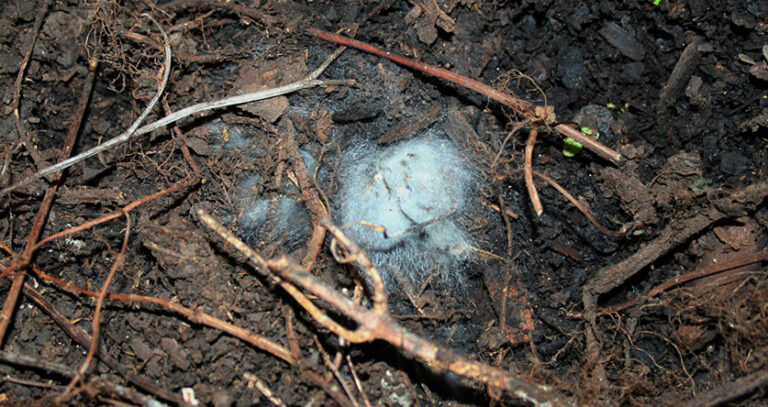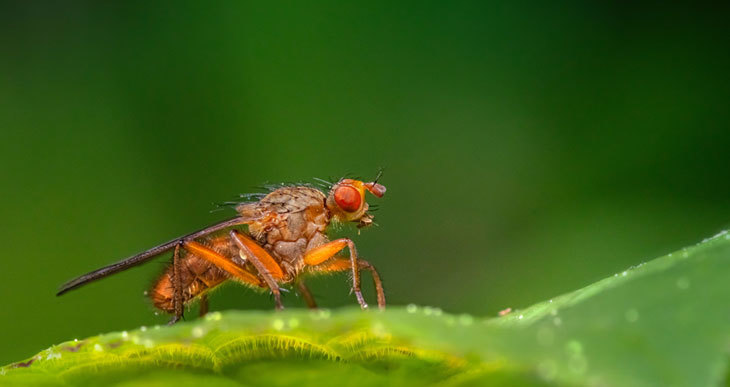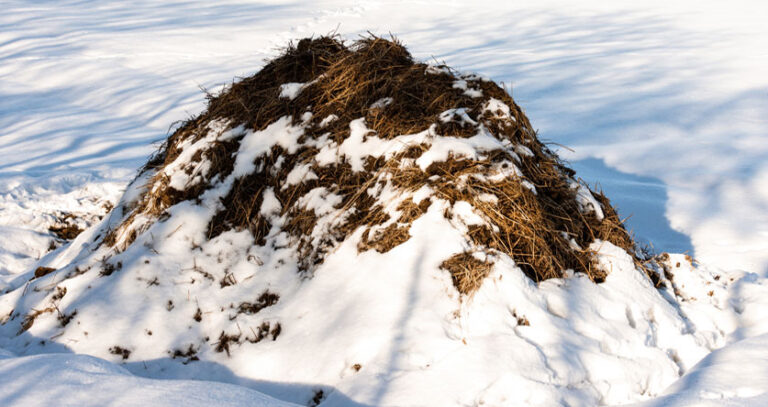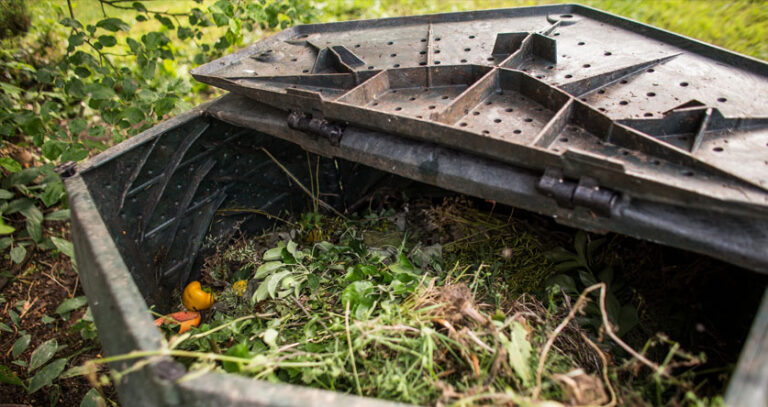White Worms in Compost (Is this Good or Bad?)

White Worms in Compost (Is this Good or Bad?)
Finding white worms in compost can be a startling discovery.
Quite often, they appear in large groups. It almost looks like your compost is infested!
But are these wiggly creatures something to worry about? Or just a normal part of the composting process?
It’s certainly not a sign to give up on composting efforts.
I’ll explain all you need to know about white worms in your compost in this article.
White Worms in Compost
The worms in your garden will naturally colonize compost.
Everybody is familiar with earthworms. Worms assist in composting by breaking down food scraps and other organic materials into vermicastings. The castings then enrich the compost with nutrients to help plant growth.
But white worms are slightly different. They thrive in conditions with a low pH (acidic) and high moisture levels.
What are the tiny white worms in my compost?
These worms are better known as “pot worms” and are smaller relatives of the earthworm family.
The scientific name for pot worms is “enchytraeids.” These segmented worms are pretty small – about 1/4inch to 1inch long (6-25mm).
These weird-looking worms might look creepy, but they are harmless and a normal part of soil life. It’s common to find these worms in the earth. Still, they particularly like highly organic conditions like those found in compost.
So it’s not surprising they turn up in your compost ingredients.
Why do I have white worms in my compost?
Pot worms favor acidic conditions, indicating decreased pH in the compost material.
White, or “Pot Worms,” commonly inhabit compost heaps and are inoffensive.
Pot worms seem to infest compost bins overnight, especially when humans add acidic or starchy material to the compost heap and allow it to ferment.
Certain kinds of food scraps cause over-acidity. Things like tomatoes, onions, pineapple, or citrus can tip the balance towards a more acidic environment. Oak leaves and pine needles are also highly acidic.
If white worms are plentiful in compost, then most likely, the pH level is not neutral.
You can check pH levels in your compost using something like this soil pH testing kit. (Amazon link)
White Worm Woes
White pot worms show up in compost piles for two reasons:
- The compost has become too wet or moist due to overwatering or an abundance of rain.
- Humans have added material that changes the pH balance in the compost pile.
Pot worms appear suddenly as a large group of small, white worms that look like threads going through a compost heap.
Like red worms, they eat waste and aerate the soil, and compost around them. So pot worms don’t directly endanger anything in a compost pile, including their red wiggler relatives.
The problem with pot worms is that they thrive in conditions that better types of composting worms don’t.
Pot worms occur naturally in compost, but an infestation of them means that the compost environment has changed for their comfort, such that they multiply.
Are white worms in compost good or bad?
When white worms are found in compost, it’s not necessarily bad. Their presence will not harm the composting process. Still, it may be a sign that the compost itself is less hospitable towards more beneficial worms, like red wigglers.
White worms are good composters in their own right. Like earthworms or red wigglers, they convert organic waste into a valuable soil amendment.
So, all things considered, they help the composting process.
When conditions are right, pot worms can multiply rapidly, and you end up with a significant population of pot worms.
Tiny white worms in vermicompost
Finding white worms in your vermicompost might signify that conditions have become too acidic. This is a situation you generally want to avoid.
Compared to their white counterparts, red worms (or red wigglers) are considered the best in nature for composting, especially if you’re running a worm farm.
The red worm has a distinct digestive system for converting food waste and other organic materials into vermicast, a form of nutrient-rich compost.
Vermicomposting (composting with worms) is most effective when red worms are involved. Unfortunately, if white worms populate compost, it’s less likely red worms will be present.
Red worms are sensitive to pH value, and it is an essential factor in their growth and survival. All worms have sensitive skin and are affected by pH levels.
Finding white worms in compost indicates a lower pH level and more acidic conditions, which keeps the red wigglers away and interferes with the composting process. It could also mean that your compost is too wet.
Again, worm farmers regularly use a pH meter like this to monitor alkalinity and acidity (Amazon).
How to get rid of white worms in compost
Adjusting the pH balance in the compost pile to make it less acidic and more alkaline will reduce pot worm populations. Also, reducing moisture levels and drying out the compost can help.
Essentially, pH refers to the “power of hydrogen,” which is what influences acidity.
Compost can become too acidic when excessive organic matter is added for decomposition or when humans add too many foods high in acidity. These foods include sugars, citrus, dairy products, and processed material.
So what should you do if you find white worms in your compost?
Here are a few solutions for adjusting compost to get rid of white worms:
- Lime helps reduce acidity in compost. Adding calcium carbonate material such as crushed eggshells or agricultural lime can neutralize acidity. Amazon is a good resource for purchasing garden lime products. Users should follow all directions when using lime.
- Wood ashes are also a useful liming material and can help lower acidity. If you have leftover ashes from a fire, give these a try. It will also add helpful potassium to your compost.
- Improving airflow in a compost pile will facilitate the decomposition process of organic material. Aeration will also help dry out the compost if it is too wet. The ideal range of moisture levels is between 40-60%. Try lowering moisture to the 40% limit for a while.
- Adding dry materials like straw or shredded cardboard and mixing can help reduce humidity and lower the ratio of acidic organic matter.
Vermicompost – if you’re collecting compost from a worm farm and have a lot of pot worms still in the mixture, you can get rid of them by making things hot! Put the worm castings out in the sun with a plastic sheet or old black trash bag over the top. This will heat things up considerably, and the worms will vacate the compost.
Wormy conclusions
Making compost can be challenging. You’ll probably encounter all kinds of problems during your composting efforts. Including weird things appearing in the pile!
White pot worms are not inherently good or bad, as they are naturally found in compost.
Correcting the pH level of compost is one way to get back on track. But, overall, learning effective composting techniques and avoiding potential problems will enhance the process for everyone—including the worms!







